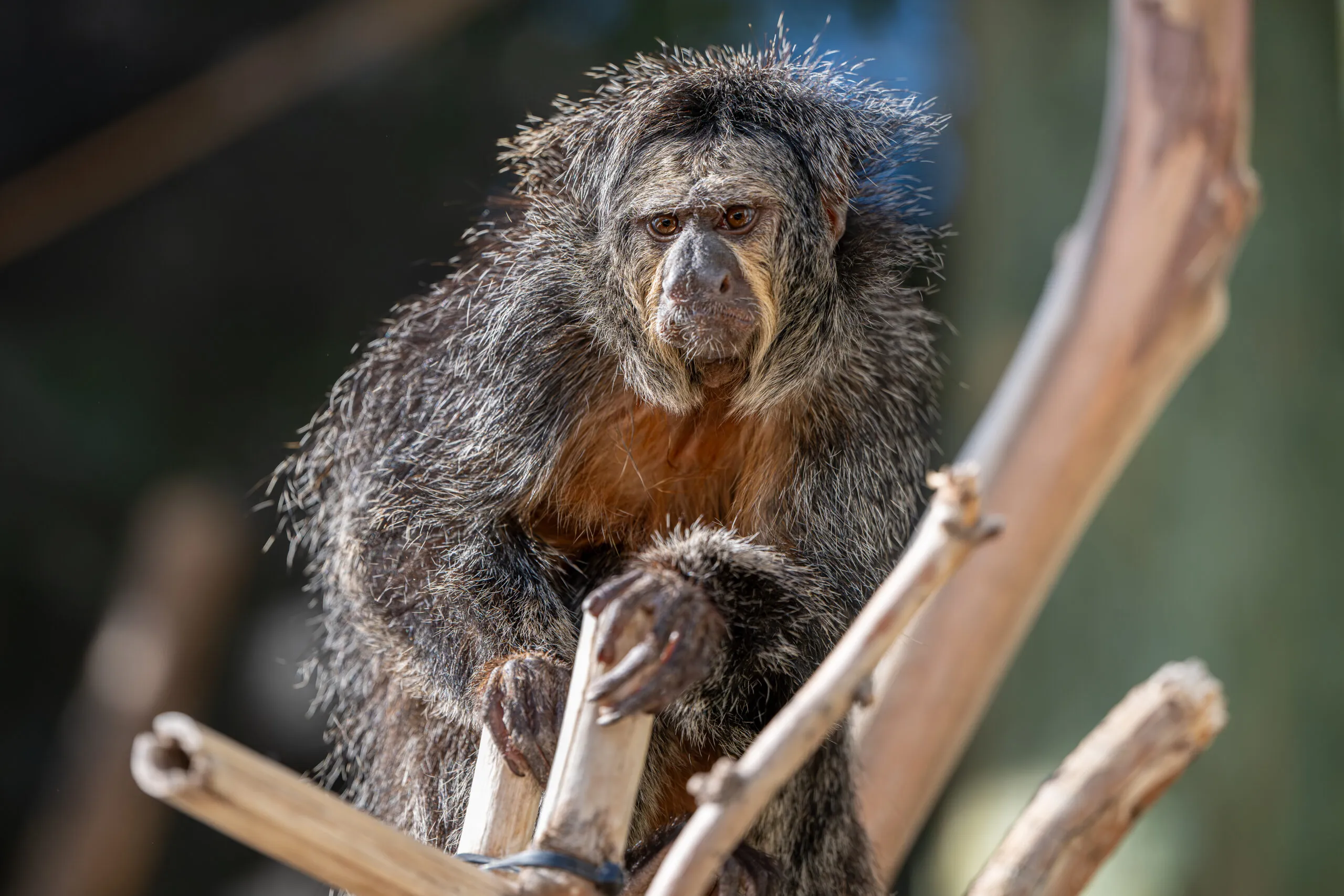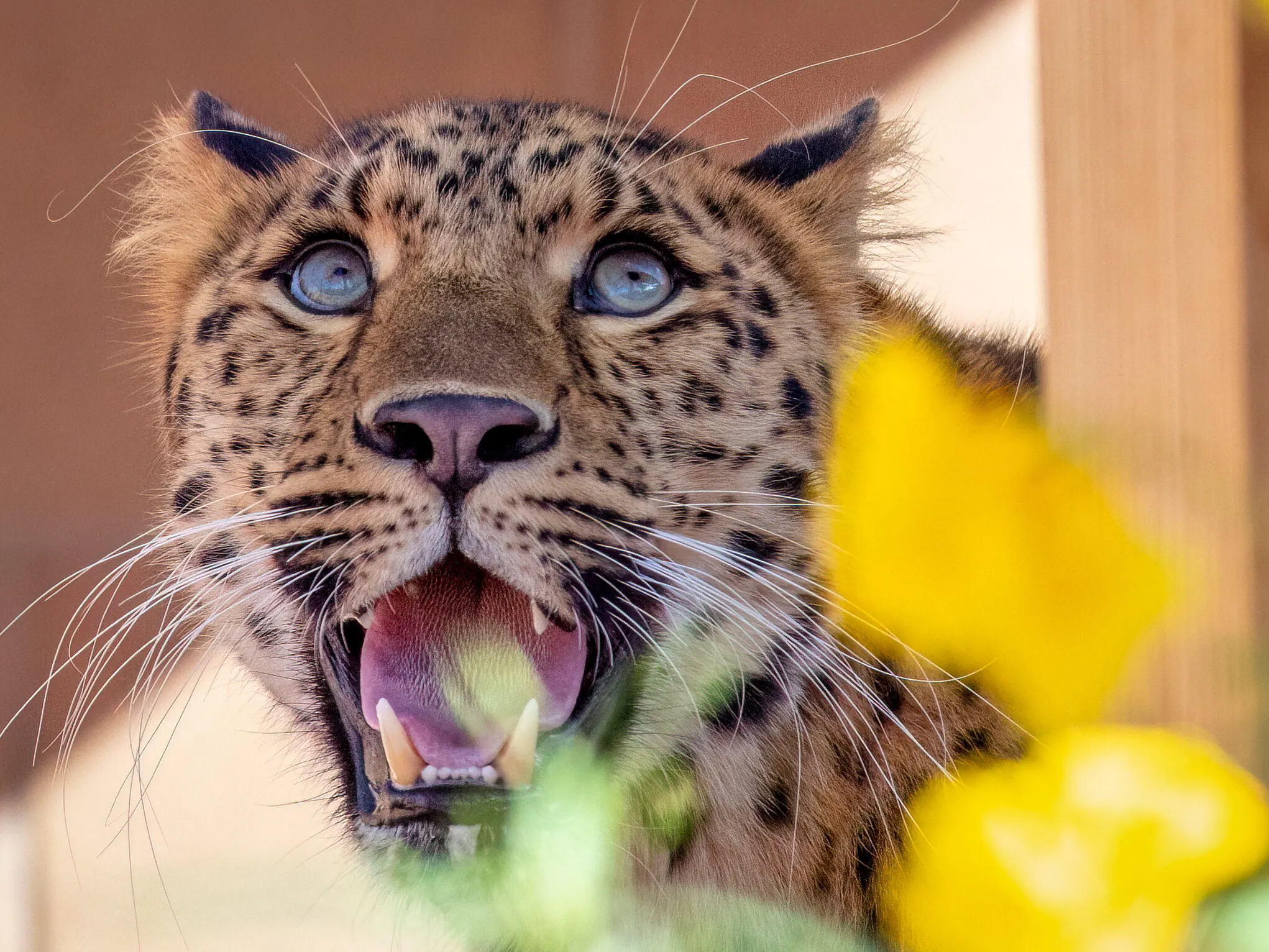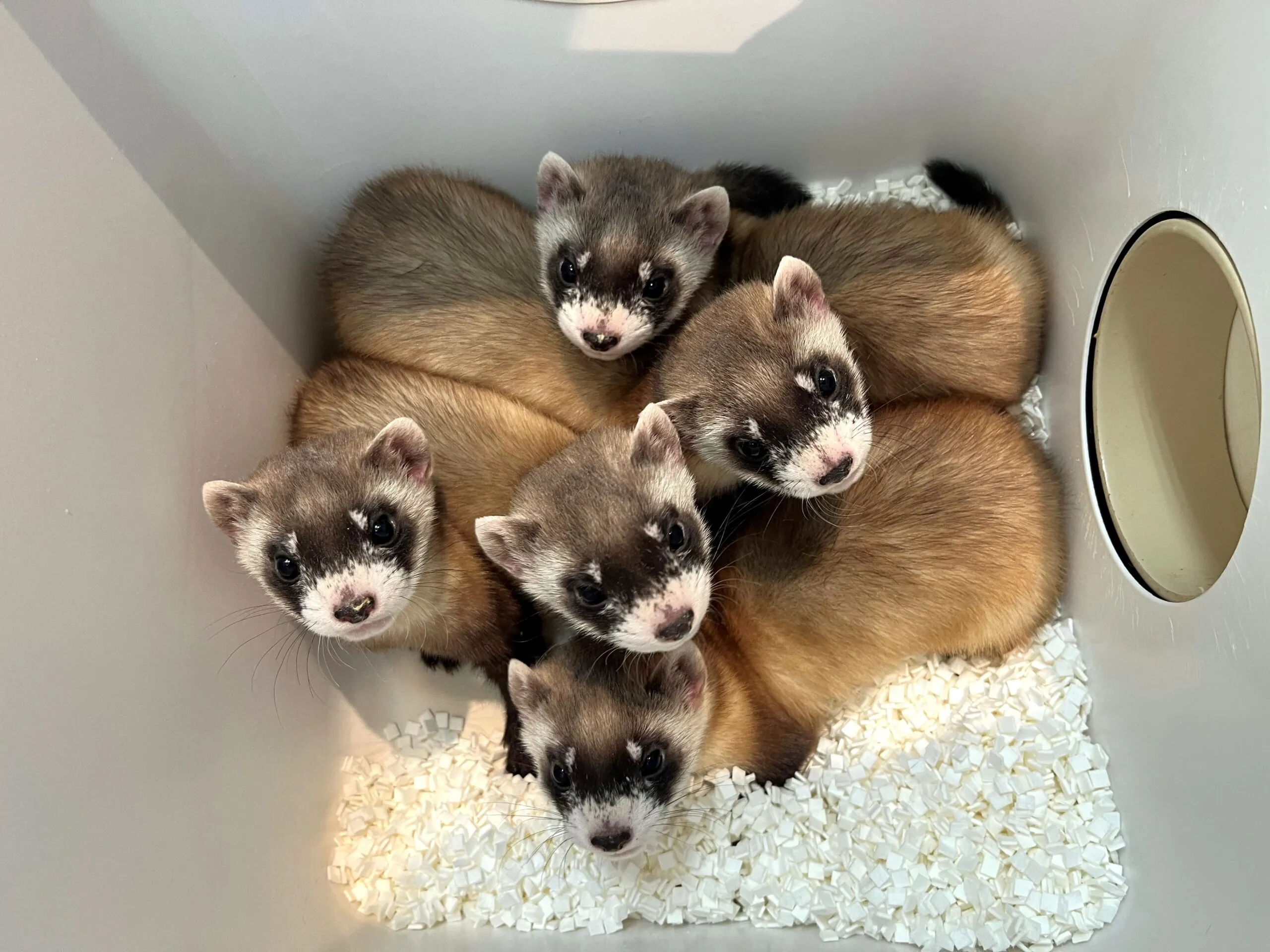Home Explore Animals & Wildlife White-faced Saki Monkey
White-Faced Saki Monkey
Pithecia pithecia
Sexual Dimorphism
White-faced saki monkeys exhibit sexually dimorphism, which means the males and females look different. Males are larger than females and have black hair with white faces. Females are smaller than males and have shorter, brownish-grey hair with white or pale around the nose and mouth.
Mate Selection
Saki monkeys were previously thought to be monogamous; however, recent studies show they have a variety of reproduction strategies depending on available resources. For instance, when environmental conditions are unfavorable and food is scarce, there will be more monogamous groups. In turn, if the environmental conditions are favorable and food resources are plentiful, males tend to be more polygamous.
Tree Life
Saki monkey bodies are adapted for life in the trees. Rarely coming down to the ground, they have long bushy tails that help them balance as they walk along branches on all fours, much like a cat. They use their strong hind legs for giant leaps or to stand up and sprint if needed.

Diet: fruit, honey, leaves, flowers, small animals
Zoo Diet: formulated feed, starch, veggies, romaine, fruits, invertebrates, browse
Habitat: forests, swamps
Weight: 3 – 5 lbs


Plan your visit today!
The Phoenix Zoo is one of the largest non-profit zoos in the U.S., caring for over 3,000 animals, with nearly 400 species represented, including many threatened/endangered species.

Plan your visit today!
The Phoenix Zoo is one of the largest non-profit zoos in the U.S., caring for over 3,000 animals, with nearly 400 species represented, including many threatened/endangered species.












